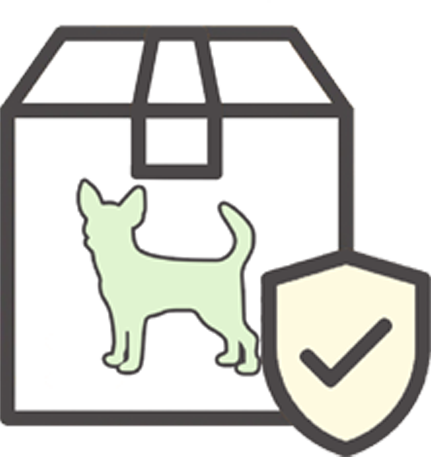Let the Games Begin: Deciphering Dog Play Behavior and Signals
Updated On: Friday, November 15, 2024 10:06:16 AM America/Los_Angeles
Play is an essential part of a dog's life, fostering physical activity, socialization, and mental stimulation. At DoggieLawn, we understand the joy that comes from watching dogs play and the importance of providing them with a safe, clean space to do so. However, understanding the nuances of play behavior and the signals dogs use to communicate during play is crucial for ensuring positive interactions and avoiding misunderstandings. Let’s delve into the world of dog play behavior to better understand what our furry friends are telling us and how DoggieLawn can support a healthy play environment.

The Importance of Play
Play isn’t just fun for dogs—it’s a fundamental part of their development and well-being. Through play, dogs:
- Develop Social Skills: Interaction with other dogs teaches them how to communicate and interpret social cues.
- Get Physical Exercise: Running, jumping, and wrestling help keep dogs fit and healthy.
- Stimulate Their Minds: Play challenges their cognitive abilities and problem-solving skills.
- Strengthen Bonds: Playing with other dogs or humans strengthens their emotional connections.
Recognizing Play Behaviors
Dog play can look a lot like fighting, which can be concerning for dog owners. However, there are distinct behaviors that signal playful intent:
- Play Bow: This classic gesture—front legs stretched out, rear end in the air—signals that the dog wants to play. It’s their way of saying, “Everything that follows is in good fun!”
- Bouncy Movements: Exaggerated, bouncy movements are a clear sign of play. These movements are often accompanied by a wagging tail and excited expressions.
- Role Reversal: During play, dogs may take turns being on top during wrestling or pretend to be submissive. This back-and-forth shows cooperation and mutual enjoyment.
- Gentle Biting and Mouthing: While it may look rough, gentle biting and mouthing is a common part of play. The key is that it’s controlled and doesn’t cause harm.
Signals to Watch For
Even in play, dogs use specific signals to communicate their comfort levels and intentions. Recognizing these signals can help prevent conflicts:
- Play Face: Dogs often have a relaxed, open-mouthed expression when playing. This “play face” indicates they are enjoying themselves.
- Pawing: Light pawing at another dog or person is a way of saying, “Let’s keep playing!” It’s a gentle, inviting gesture.
- Barking: Playful barking is usually high-pitched and accompanied by a wagging tail. It’s a way for dogs to express excitement and invite more interaction.
Avoiding Misunderstandings
While play is natural and beneficial, it’s important to monitor interactions to ensure they stay positive:
- Know When to Intervene: If play becomes too intense, or if one dog seems overwhelmed or frightened, it’s time to intervene. Look for signs of distress such as yelping, pinned ears, or attempts to escape.
- Supervise Mixed-Sized Groups: Be cautious when dogs of significantly different sizes play together. What’s playful for a large dog can be overwhelming or even dangerous for a smaller one.
- Teach Basic Commands: Commands like “come” and “leave it” can help manage play sessions and ensure dogs respond to you when needed.
Encouraging Healthy Play
Fostering a positive play environment involves both understanding and guiding your dog's behavior:
- Socialization: Regular, controlled exposure to other dogs from a young age helps develop healthy play habits.
- Provide Variety: Offer different toys and play settings to keep your dog engaged and stimulated.
- Positive Reinforcement: Reward good play behavior with treats and praise to encourage more of the same.
Understanding and interpreting your dog's play behavior and signals can significantly enhance their playtime experience, ensuring it remains fun, safe, and beneficial. By recognizing the signs of healthy play and knowing when to step in, you can help your dog develop strong social skills and maintain their physical and mental well-being. With DoggieLawn, you can create the perfect play environment that supports these goals. So, let the games begin—watch, learn, and join in the joy of your dog's playful world!

